Chickens are not just a delight to have around; they’re also great for keeping pests at bay and providing fresh eggs. But to keep them happy and healthy, it’s essential to know the answer to question, “What do chickens eat?” In this comprehensive guide, we’ll explore everything you need to know about a chicken’s diet.
What Do Chickens Eat?
In their natural environment, chickens are omnivores, which means they consume a varied diet of both plant and animal matter. Here’s a breakdown of the answer to the question, “What do chickens eat?”:
Seeds and Grains
Chickens are proficient foragers and will search for seeds and grains in their surroundings. They commonly consume grass seeds, clover, and various grains found in their natural habitat.
Green Vegetation
Chickens are known to graze on a variety of plants, including grasses, weeds, and various greens. They have a preference for tender shoots and leaves.
Insects and Small Animals
Chickens are opportunistic feeders and will eagerly consume insects, bugs, earthworms, spiders, and even small reptiles or amphibians if they come across them. My chickens have caught lizards, snakes, and frogs. This protein-rich diet provides essential nutrients.

Berries and Fruits
When available, chickens will enjoy feasting on berries, fruits, and other small fruits like wild berries from bushes.
Minerals and Grit
Chickens instinctively seek out small rocks and grit to help with the digestion of their food. Grit serves as a grinding agent in their gizzards, which aids in breaking down tough plant material.
It’s important to note that the availability of these natural food sources can vary depending on the region and environment where the chickens are living. Domesticated chickens in a backyard or farm setting may not have the same access to these natural food sources, which is why it’s important to provide a balanced and nutritious diet through commercial feeds, supplemented with treats and kitchen scraps.
What Do Chickens Eat? Basic Components
When raising chickens, it’s crucial to ensure they have access to a well-rounded diet that includes grains, protein, vegetables, fruits, and supplements to meet their nutritional needs and maintain their health and productivity.
What Do Chickens Eat?: Grains (50-60%)
Whole or cracked corn is a staple. It’s a great source of energy for chickens. Wheat provides essential carbohydrates, and barley is high in fiber and a good alternative to corn.
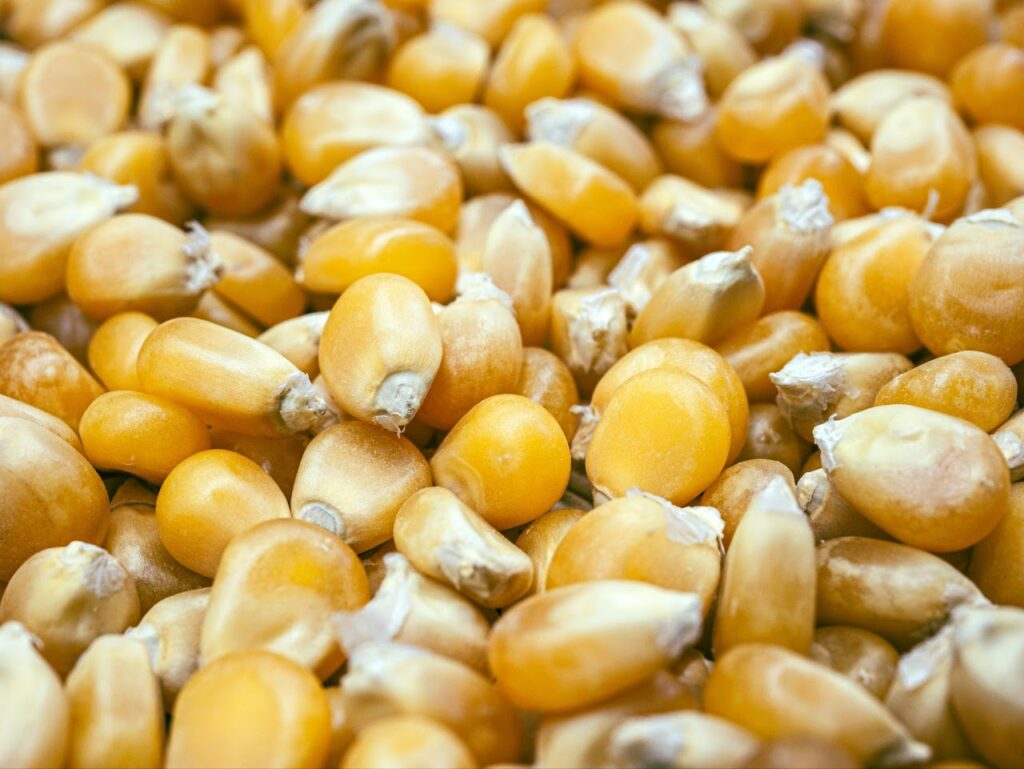
Hen scratch, also known as chicken scratch or poultry scratch, is a mixture of grains and seeds commonly fed to chickens. It’s often used as a supplement to their regular diet to provide variety and enrichment. Hen scratch typically includes grains like corn, wheat, barley, and sometimes sunflower seeds. You can find hen scratch at various places:
Feed Stores or Agricultural Supply Stores: These stores specialize in animal feeds and supplies. They usually have a wide range of options for poultry feed, including hen scratch.
Online Retailers: Many online stores, including large platforms like Amazon, offer a variety of poultry feeds, including hen scratch. You can browse and purchase from the comfort of your home.
Farm Supply Chains: Some large chain stores that cater to agricultural needs also carry poultry feeds. Check with stores like Tractor Supply Co., Rural King, or similar chains.
Local Farmers Markets or Co-ops: Some local markets or farmer’s cooperatives may sell poultry feeds, including scratch, especially if they cater to backyard poultry keepers.
Specialty Pet or Livestock Stores: Some specialty pet or livestock stores may carry poultry feeds, including hen scratch, especially in areas with a significant number of backyard poultry enthusiasts.
When purchasing hen scratch, be sure to check the ingredients list to ensure it meets the nutritional needs of your specific flock. It’s also a good idea to consult with a local veterinarian or poultry expert to ensure you’re providing the best diet for your chickens based on their individual requirements and any specific local considerations.
What Do Chickens Eat?: Protein (20-30%)
Chickens love insects such as mealworms, earthworms, and grubs. They’re rich in protein. Plant based proteins chickens love are legumes such as soybeans, lentils, and chickpeas.

For chickens that require a higher protein content in their diet, such as growing chicks, laying hens, or birds in recovery or molting, it’s important to provide feeds that are rich in protein. Here are some types of chicken feed known for their excellent protein content:
Starter Feeds: These are formulated for young chicks, usually from hatching up to 8-10 weeks of age. Starter feeds typically contain around 18-20% protein to support rapid growth and development.
Grower Feeds: Designed for adolescent chickens, grower feeds provide a balanced mix of nutrients, including protein. They typically contain around 15-18% protein to support steady growth without the excessive protein levels found in starter feeds.
Layer Feeds: Specifically designed for laying hens, layer feeds contain a balanced blend of nutrients, including higher levels of calcium for strong eggshells. They generally contain around 16-18% protein.
Broiler Feeds: These feeds are formulated for meat-producing chickens (broilers). They have a higher protein content, usually around 20-24%, to support rapid muscle development.
Gamebird Feeds: Gamebirds, such as quail, pheasants, and guinea fowl, have specific dietary needs. Gamebird feeds are typically higher in protein, often around 20-30%, to support their active lifestyle.
Supplemental Proteins: In addition to regular feeds, you can provide supplemental protein sources like mealworms, crickets, and other insects. These can be particularly beneficial for free-range chickens or those needing an extra protein boost.
High-Protein Specialty Feeds: Some brands offer specialty feeds with even higher protein content, often used for specific purposes like conditioning for shows or supporting birds during molting or recovery.
Always check the label of the feed to verify its protein content, and choose the type that best suits the specific life stage and needs of your chickens. Additionally, consult with a local poultry expert or veterinarian for specific recommendations based on your flock’s individual requirements. Remember to provide access to clean, fresh water at all times, as it’s essential for proper digestion and overall health.
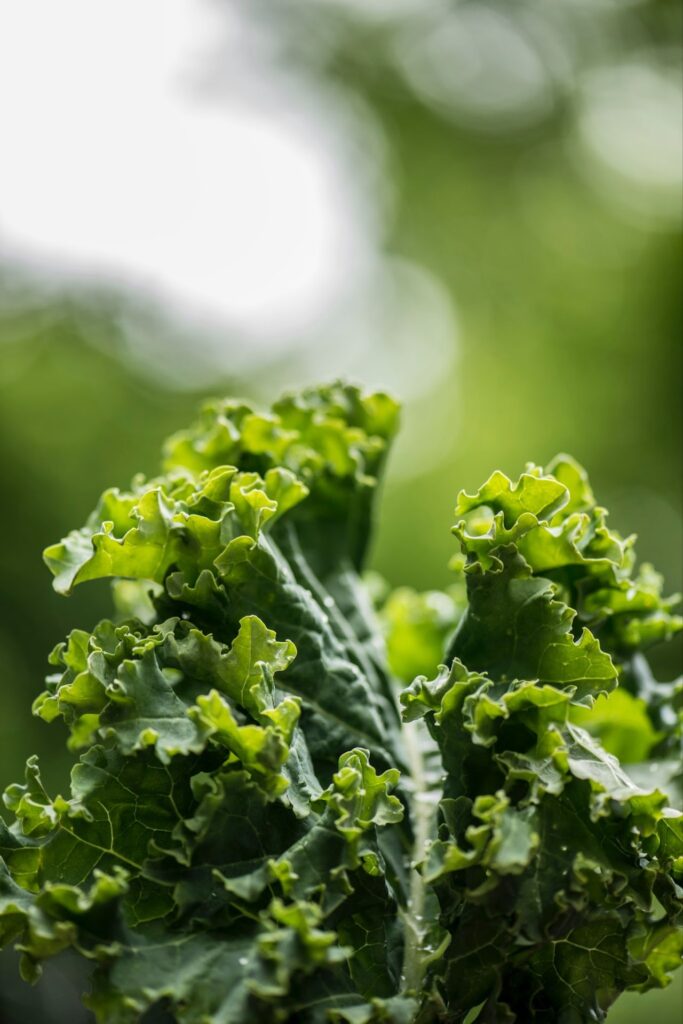
What Do Chickens Eat?: Vegetables and Fruits (10-20%)
Leafy greens such as kale, spinach, lettuce, and Swiss chard are packed with vitamins and minerals. Fruits like apples, berries, and melons provide essential vitamins and natural sugars. While most commercial chicken feeds are primarily grain-based and do not contain whole fruits and vegetables, you can supplement your chickens’ diet with fresh produce to provide them with additional nutrients and enrichment. Here are some ways to incorporate fruits and vegetables into your chickens’ diet:
Scraps and Leftovers: You can feed your chickens kitchen scraps and leftover fruits and vegetables. These can include apple cores, carrot peelings, cucumber ends, and other safe and edible parts of fruits and vegetables.
Garden Harvest: If you have a garden, consider sharing surplus produce with your chickens. They will happily munch on excess zucchinis, tomatoes, lettuce, and more.
Melons: Watermelon, cantaloupe, and other melons are a great source of hydration, especially in hot weather.
Pumpkins and Squash: These are not only nutritious but also provide entertainment as chickens peck and scratch at the flesh and seeds.
Corn on the Cob: Chickens enjoy pecking at corn on the cob. It’s a fun and nutritious treat.
Cabbage and Brussels Sprouts: Hanging a cabbage or scattering Brussels sprouts can be a fun way to keep your chickens engaged and provide them with extra nutrition.
Carrots: Carrots are a good source of vitamins and can be hung or chopped up for chickens to peck at.
When introducing new fruits and vegetables, it’s important to observe how your chickens react and monitor for any adverse effects. Also, ensure that any produce provided is fresh and free from mold or rot. Rotate the types of fruits and vegetables you offer to provide a varied diet.
Remember that while fruits and vegetables can be a valuable addition to a chicken’s diet, they should not replace the primary feed. A balanced commercial feed should still be the main source of nutrition for your flock.
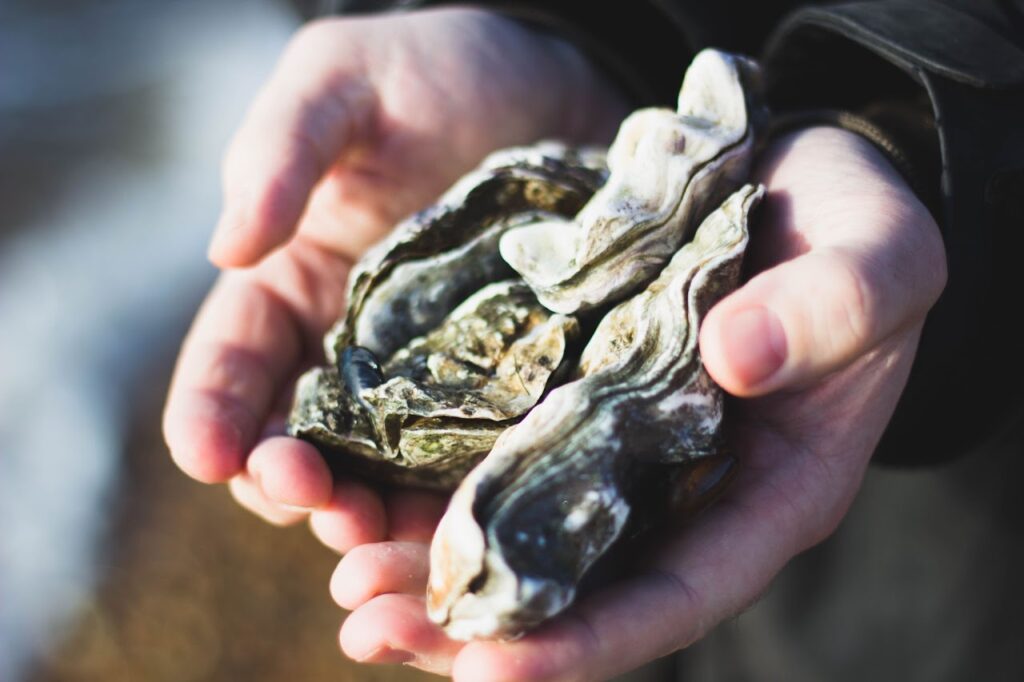
What Do Chickens Eat?: Grit (1-2%)
Grit aids in the digestion of hard grains and provides essential minerals. Grit is an essential component of a chicken’s diet as it aids in the digestion of hard grains and provides essential minerals. There are two types of grit that chickens need, soluble grit and insoluble grit.
Soluble grit is typically made of crushed shells (such as oyster shell) and is a source of calcium. It helps with the formation of strong eggshells. Crushed eggshells are also an excellent source of calcium that chickens need to produce strong eggshells.
Insoluble grit is small, hard, and sharp-edged material like crushed rocks or pebbles that chickens swallow and store in their gizzards. The gizzard then contracts and grinds against the grit to help break down grains and seeds.
Here’s how you can provide grit to your chickens:
Free-Range Foraging: If your chickens are allowed to free-range, they will naturally pick up small rocks and pebbles from their environment. However, you should also provide supplemental grit to ensure they have access to enough.
Commercial Grit Products: You can purchase commercial poultry grit from feed stores, agricultural supply stores, or online retailers. These are specifically designed for chickens and are available in different sizes to accommodate various bird sizes.
Oyster Shell: Oyster shell is a common form of soluble grit that provides calcium. It’s particularly important for laying hens to support the production of strong eggshells.
Crushed Eggshells: You can save and crush your own eggshells, making sure they are thoroughly cleaned and baked in the oven to remove any potential contaminants.
When providing grit, it’s important to consider the size of your chickens. Larger birds may require larger-sized grit, while bantams and smaller breeds will need smaller grit. Always make sure that the grit is clean and free from any contaminants. It’s best to offer it in a separate container, allowing the chickens to take what they need voluntarily. Remember, while grit is crucial for chickens, it’s not a substitute for a balanced poultry feed. It’s a supplemental item that helps with digestion and mineral intake.

What to Avoid
Junk Food: Avoid feeding chickens processed foods, sugary snacks, and salty treats.
Toxic Plants: Keep them away from plants like rhubarb, nightshade, and certain wild mushrooms.
Spoiled or Moldy Food: Moldy food can be toxic to chickens. Always provide fresh, clean feed.
Feeding Tips:
Access to Clean Water
Ensure chickens have a constant supply of fresh, clean water. Adding one tablespoon of raw, unfiltered, and unpasteurized apple cider vinegar per gallon of water can provide several potential benefits:
Improved Digestion: Apple cider vinegar contains acetic acid, which can help improve digestion by promoting the growth of beneficial bacteria in the digestive tract. This can lead to better absorption of nutrients from their feed.
Boosted Immune System: The vitamins, minerals, and antioxidants in apple cider vinegar may help support a chicken’s immune system, making them more resilient to common poultry illnesses.
Balanced pH Levels: Apple cider vinegar may help balance the pH levels in a chicken’s digestive tract, creating an environment that is less favorable for harmful bacteria.
Prevention of Algae Growth: The mild acidity of apple cider vinegar can help prevent the growth of algae and other undesirable microorganisms in the water container.
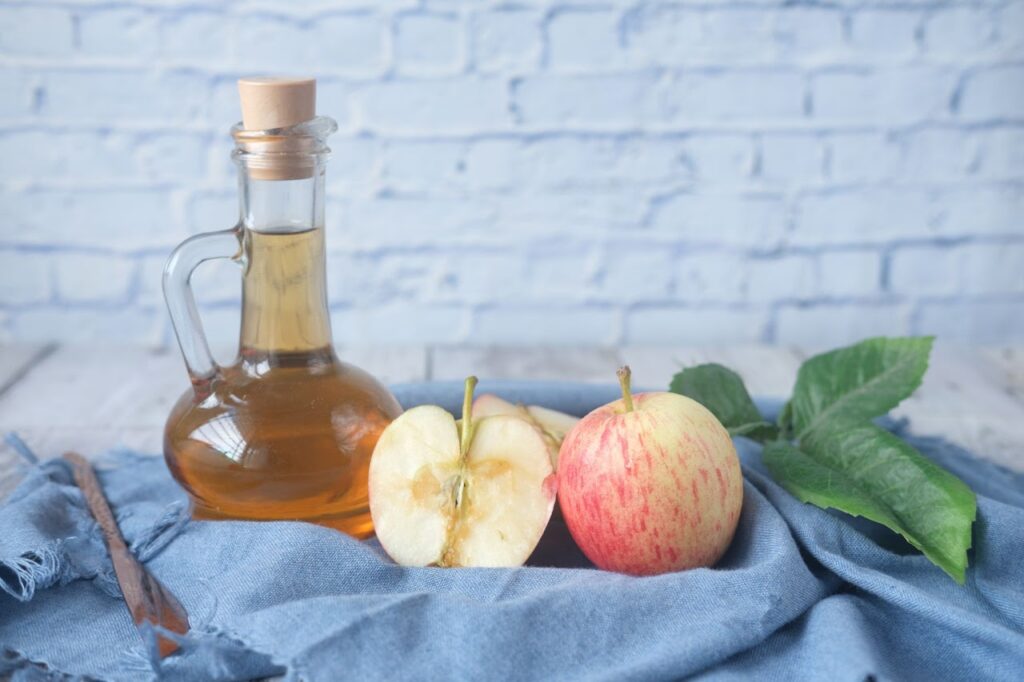
Electrolyte Balance: Apple cider vinegar is a source of natural electrolytes like potassium and sodium, which are important for maintaining proper hydration and muscle function.
Improved Feather Condition: Some chicken keepers believe that apple cider vinegar can help improve the overall condition of a chicken’s feathers, making them shinier and healthier.
Reduced Odor: Apple cider vinegar may help reduce the strong odor associated with chicken droppings, making the coop area more pleasant for both chickens and their keepers.
It’s crucial to note that while many chicken keepers find benefits in using apple cider vinegar, scientific studies on its effects in poultry are limited. As with any supplement, it’s best to consult with a poultry expert or veterinarian before introducing it to your flock’s diet. Additionally, always monitor your chickens for any adverse reactions when making changes to their diet or water additives.
Free Range vs. Confined
Free-range chickens have access to a wider variety of natural food sources. Free-range chickens have several advantages, both for the chickens themselves and for those who raise them. Here are some of the benefits of keeping free-range chickens:
Improved Animal Welfare: Free-range chickens have the freedom to roam, forage, and engage in natural behaviors like scratching, dust-bathing, and exploring. This promotes a higher quality of life compared to chickens kept in confined spaces.
Healthier Diet: Free-range chickens have access to a more varied diet. They can forage for insects, seeds, and plants, which can lead to a more balanced and nutrient-rich diet.
Lower Stress Levels: Chickens that are allowed to roam and forage are generally less stressed than those kept in crowded conditions. This can lead to better overall health and resilience to diseases.
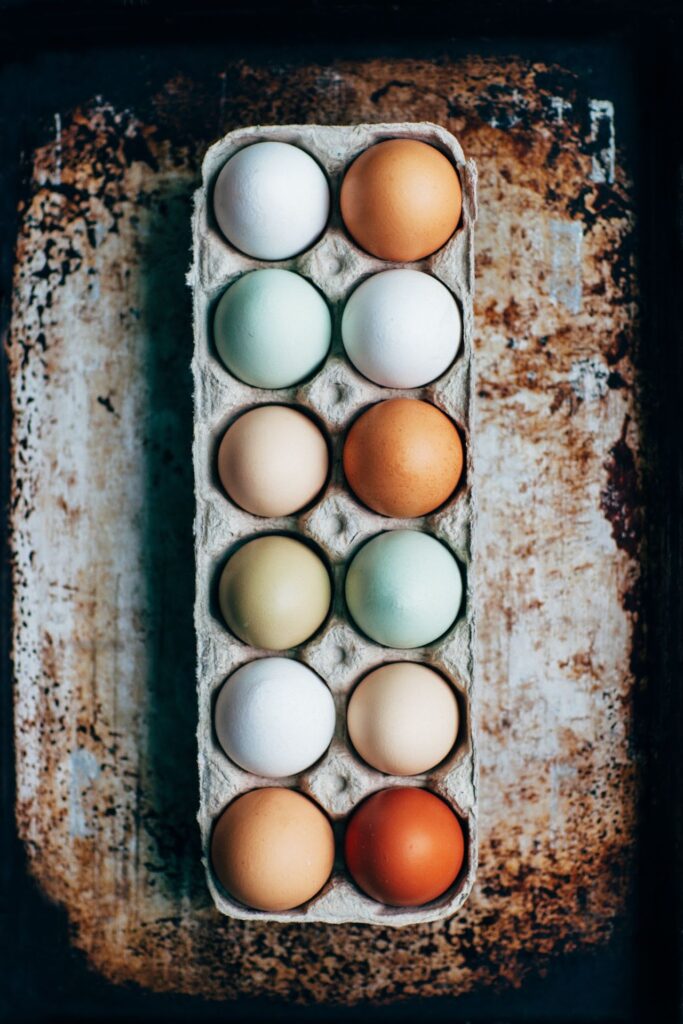
Higher Quality Eggs and Meat: Eggs from free-range chickens often have richer yolks and a more robust flavor due to their diverse diet. Similarly, meat from free-range chickens can be leaner and have a more distinct taste.
Natural Pest Control: Free-range chickens are excellent foragers and can help control insect populations in the area where they roam. This can be beneficial for gardens and farms.
Reduced Need for Medications: Because free-range chickens have access to a more natural and diverse diet, they may require fewer supplements or medications to maintain their health.
Improved Environmental Impact: Free-range systems often have lower environmental impacts compared to intensive indoor farming. Chickens can help control pests naturally, reducing the need for chemical interventions.
Sustainable Agriculture: Integrating free-range chickens into a farm or homestead can be part of a sustainable agriculture approach. They can help with soil health through scratching and foraging, and their droppings can be used as valuable fertilizer.
Educational Value: Keeping free-range chickens can be an educational experience for individuals and families. It provides opportunities to learn about animal behavior, agriculture, and sustainable practices.
Economic Benefits: Depending on the scale of the operation, free-range chickens can potentially yield economic benefits through the sale of eggs, meat, or as a part of a diversified farming enterprise.
It’s important to note that while free-range systems offer many advantages, they also require careful management to ensure the safety and well-being of the chickens. Providing appropriate shelter, protection from predators, and access to clean water are essential components of successful free-range chicken keeping.
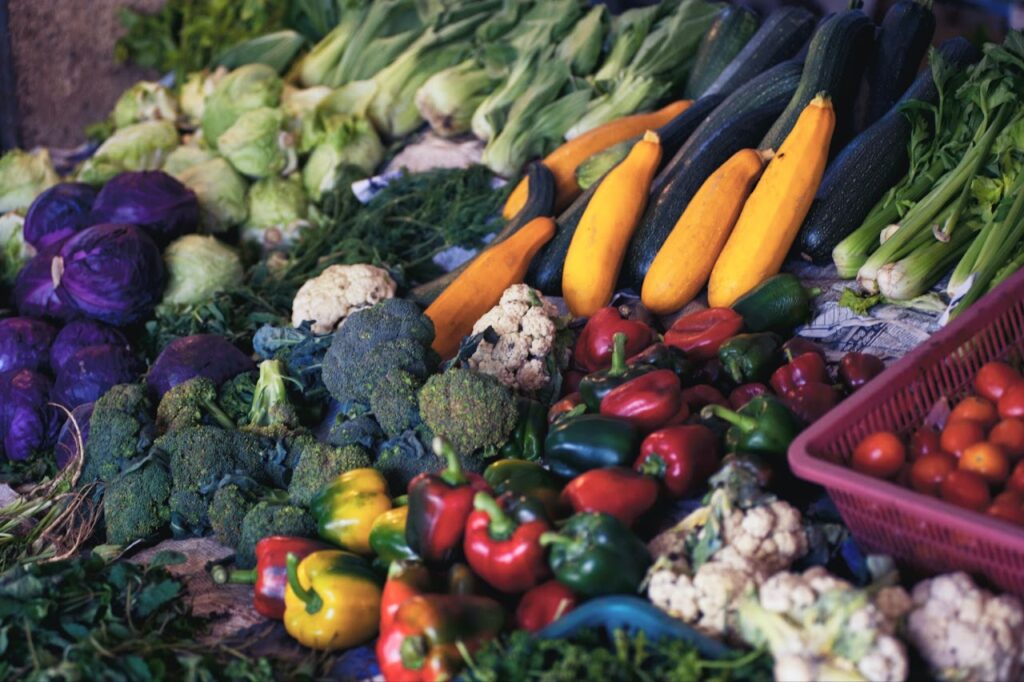
What Do Chickens Eat?: Balance is Key
Aim for a balanced diet to meet their nutritional needs. Ensuring your chickens have a balanced diet is crucial for their overall health, productivity, and well-being. Here are some steps you can take to achieve this:
Provide a High-Quality Commercial Feed: Start with a good-quality commercial poultry feed that is appropriate for the age and purpose of your chickens (e.g., starter, grower, layer, etc.). These feeds are formulated to meet the specific nutritional needs of chickens at different stages of life.
Supplement with Fresh Fruits and Vegetables: Offer a variety of fresh fruits and vegetables as treats or supplements. These can provide additional vitamins, minerals, and antioxidants. Leafy greens, carrots, apples, and other produce can be suitable options.
Provide Protein-Rich Foods: Ensure that your chickens have access to sources of protein, such as insects, mealworms, or legumes. Protein is especially important for young chicks, laying hens, and birds in recovery.
Include Grit and Calcium Sources: Provide insoluble grit (small rocks or crushed shells) to help chickens grind down their food in their gizzards. Also, offer soluble grit, like oyster shell, to provide calcium for strong eggshells.
Rotate Treats and Scraps: If you’re providing kitchen scraps or treats, try to offer a variety of items to ensure a balanced range of nutrients.
Maintain a Clean Feeding Area: Ensure that the feeding area is kept clean and free from contaminants. Regularly clean feeders to prevent mold or spoilage.
Consult a Poultry Expert or Veterinarian: If you have specific concerns about your chickens’ diet or if you’re facing any health or nutritional issues, consult with a poultry expert or veterinarian for personalized advice.
Remember, a balanced diet is key to the overall health and well-being of your chickens. It’s important to provide a consistent and nutritious diet to support their growth, egg production, and overall vitality.
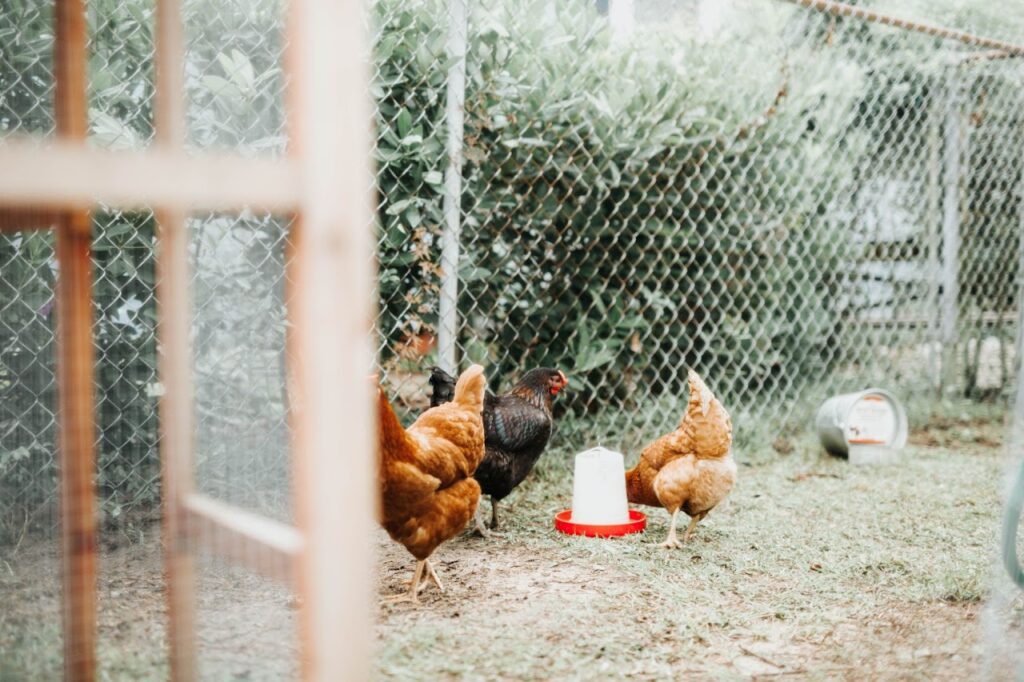
Monitor Consumption
Pay attention to how much they eat and adjust portions accordingly. Monitoring your chickens’ food consumption is an important aspect of ensuring they receive the right amount of nutrition without overfeeding or underfeeding. Here are some steps you can take to effectively monitor their consumption:
Regular Observation: Spend time observing your chickens during feeding. This allows you to see which birds are actively eating and how much.
Check Feed Levels: Keep an eye on the level of feed in their feeders. Note how quickly it’s being consumed and adjust accordingly.
Weigh Feed: Weighing the feed before and after a designated feeding period can give you a precise measure of how much the chickens are consuming.
Feed Conversion Ratios: For commercial operations, calculating the feed conversion ratio (FCR) can provide insight into the efficiency of feed usage. This involves tracking the weight of feed given and the weight of meat or eggs produced.
Use Feeder Designs with Controls: Some feeders are designed with controls or adjustments that allow you to regulate the flow of feed. This can help prevent overconsumption.
Limit Access to Treats: If you provide treats or kitchen scraps, do so in moderation. Excessive treats can lead to imbalances in their diet.
Keep Records: Keep a log of how much feed you’re providing and how quickly it’s being consumed. This can help identify trends or irregularities.
Observe Behavior and Body Condition: Pay attention to the behavior and body condition of your chickens. Overweight or underweight birds may indicate feeding issues.
Monitor Water Consumption: Changes in water consumption can be an indicator of changes in feed consumption. Ensure chickens always have access to clean water.
Adjust as Needed: Based on your observations, adjust the amount of feed provided. This may be necessary seasonally or as the flock’s needs change (e.g., during molting or egg-laying periods).
Remember, every flock is unique, and individual chickens may have different appetites and dietary needs. Regular monitoring allows you to make necessary adjustments to their diet to ensure they receive the right amount of nutrition for their health and well-being. If you have concerns about their feeding habits or consumption levels, consult with a poultry expert or veterinarian for personalized advice.
Understanding what chickens eat is crucial for their overall well-being. A balanced diet that includes grains, protein, vegetables, fruits, and essential supplements will keep your flock happy, healthy, and productive. Remember, a well-fed chicken is a happy chicken!
By following these guidelines, you’ll not only ensure your chickens lead a healthy life but also enjoy the benefits they bring to your homestead. Happy chicken keeping!
Don’t forget to sign up for the Giggles and Gloves Newsletter below, then click here for more great information on raising chickens.
